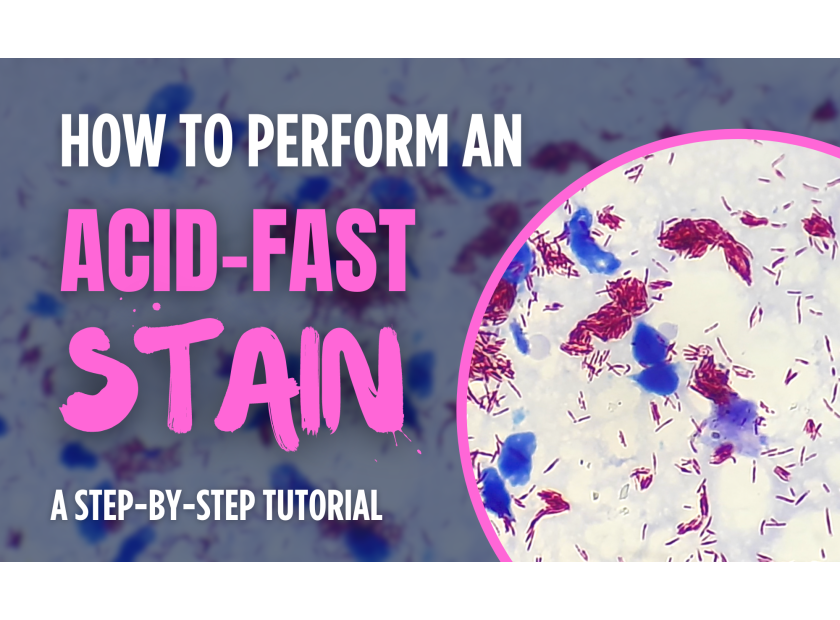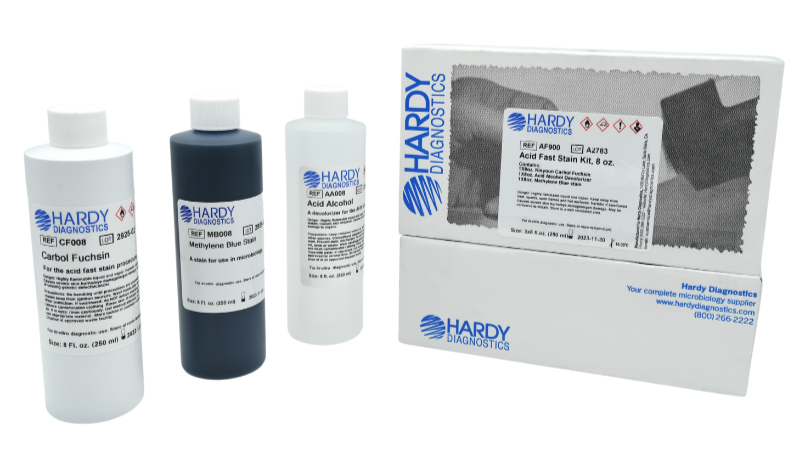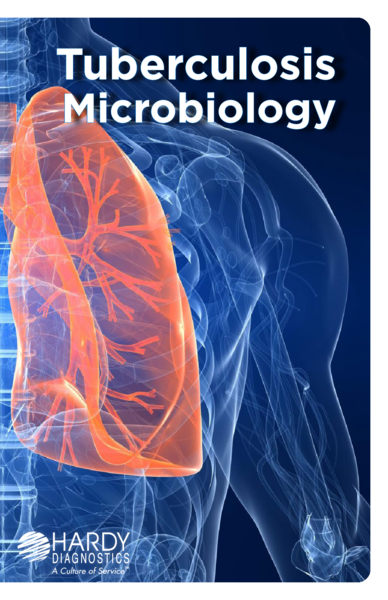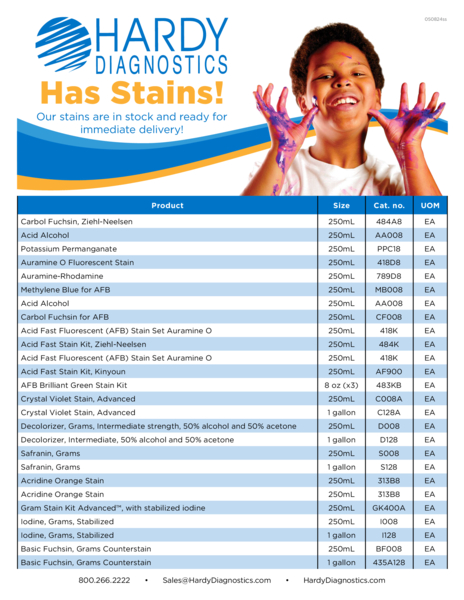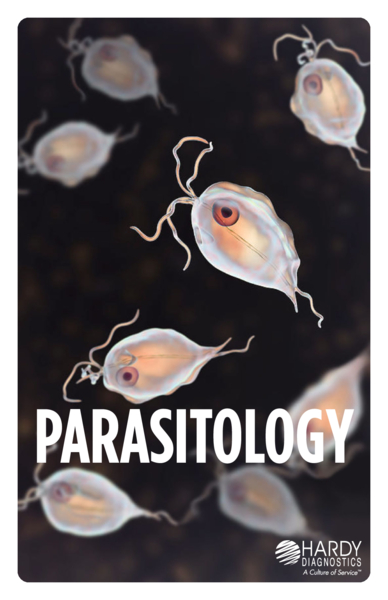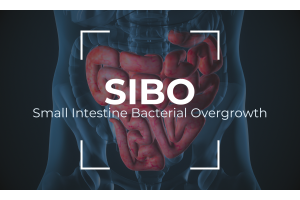How to perform an Acid-Fast Stain
Performing an acid-fast stain is a crucial technique in the field of microbiology, especially when it comes to identifying mycobacteria, such as Mycobacterium tuberculosis, the causative agent of tuberculosis. This staining method distinguishes acid-fast bacteria from non-acid-fast bacteria based on the unique properties of their cell walls. In this tutorial, we will guide you through the step-by-step process of performing an acid-fast stain, providing tips to ensure accurate results. Whether you are a student, a laboratory technician, or a researcher, mastering this technique is essential for your microbiological toolkit. Join us as we delve into the details of this vital staining procedure!
Overview
The acid-fast stain is useful in diagnosing tuberculosis infection, as well as detecting other acid-fast microorganisms from clinical specimens.
Here is a list of positive acid fast microorganisms that may be encountered from various patient specimens:
- Mycobacterium spp.
- Bacterial endospores
- Head of sperm
- Some species of yeast (inconsistent)
- Some Actinomycetes:
- Nocardia spp.
- Rhodococcus spp.
- Tsukamurella spp.
- Gordonia spp.
- Parasites
- Cryptosporidium parvum oocysts
- Isospora belli oocysts
- Cyclospora cayetanensis oocysts
- Taenia saginata eggs
- Sarcocystis spp.
- Hydatid cysts
The presence of long-chain fatty acids within the cell walls of some organisms makes these organisms both difficult to stain with water-soluble dyes and resistant to decolorization with acid solutions. Mycobacteria and other acid fast organisms, being resistant to decolorization will retain the red carbol fuchsin stain, whereas most other organisms will lose the red stain and will take on the color of the green or blue counterstain.
Based on the Kinyoun modified cold staining technique, the acid-fast stain is a very useful tool for differentiating acid-fast bacteria (AFB), such as Mycobacterium species, from those that are decolorized in the acidified decolorization step.
Acid fastness is a physical property that gives a bacterium the ability to resist decolorization by acids during staining procedures. Though the mechanisms of acid fastness vary by species.
The brilliance of red coloration is due to the retention of the carbol fuchsin dye within the cell wall of an acid-fast organism. The waxy mycolic acids that make acid-fast organisms traditionally challenging to stain also prevent decolorization.
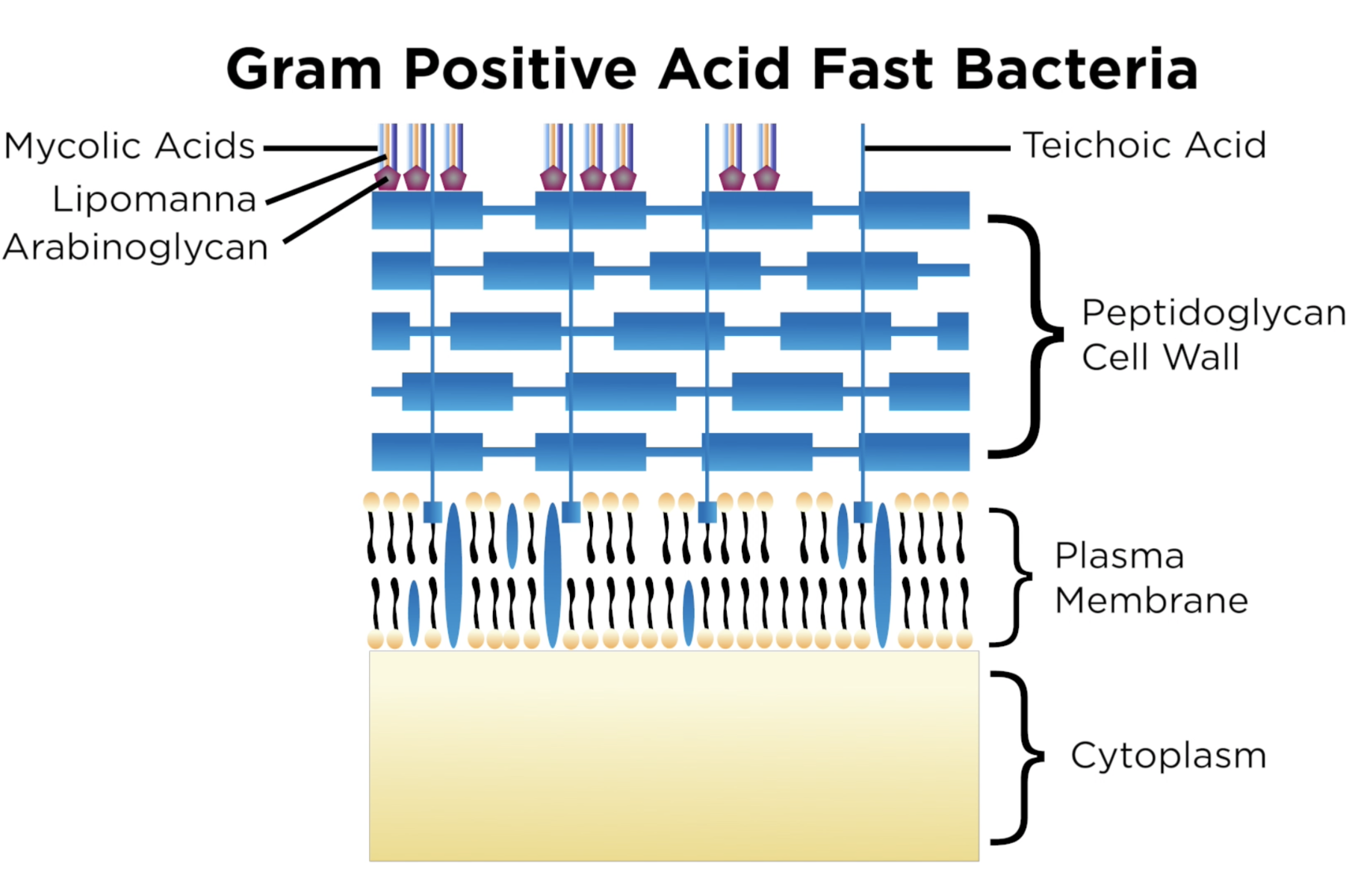
After staining, decolorizing, and counter-staining, any acid-fast bacteria present will appear as brilliant pink to red. Other bacteria present will be seen as blue if using the methylene blue to counterstain or green if using brilliant green to counterstain. No heating or time-dependent decolorization steps are required for the Kinyon stain method. The Ziehl-Neelsen method of staining requires heating of the microscope slide.
Step-by-Step Tutorial
Materials needed
In order to perform an acid-fast Stain, you will need clean glass slides, a specimen or isolated organisms to test, and an Acid-Fast stain kit.
Hardy Diagnostics Acid-Fast Stain Kit
Cat. no. AF900
The Kinyoun Acid-Fast Stain Kit from Hardy Diagnostics provides a complete solution for identifying acid-fast bacteria (AFB) without the need for heat. This convenient kit includes:
- 8oz Carbol Fuchsin
- 8oz Methylene Blue
- 8oz Acid Alcohol
Slide Preparation
Before beginning the acid-fast stain test, have your materials prepared on your disinfected surface. You can effectively heat fix your slide by placing it on a 60° C heat block for about 5-10 minutes. Using a flame is not recommended since the excessive heat will distort the cells.

Step 1: Primary Stain
(Carbol Fuchsin)
Flood a heat-fixed and dried organism smear with the carbol fuchsin stain for 2-3 minutes. No further heat is required. Rinse the slide with deionized water.

Step 2: Decolorization
(Acid Alcohol)
Using the acid alcohol decolorizer, direct a gentle stream on the smear. When no more red color is seen coming off the slide, stop decolorizing. Rinse with deionized water again.
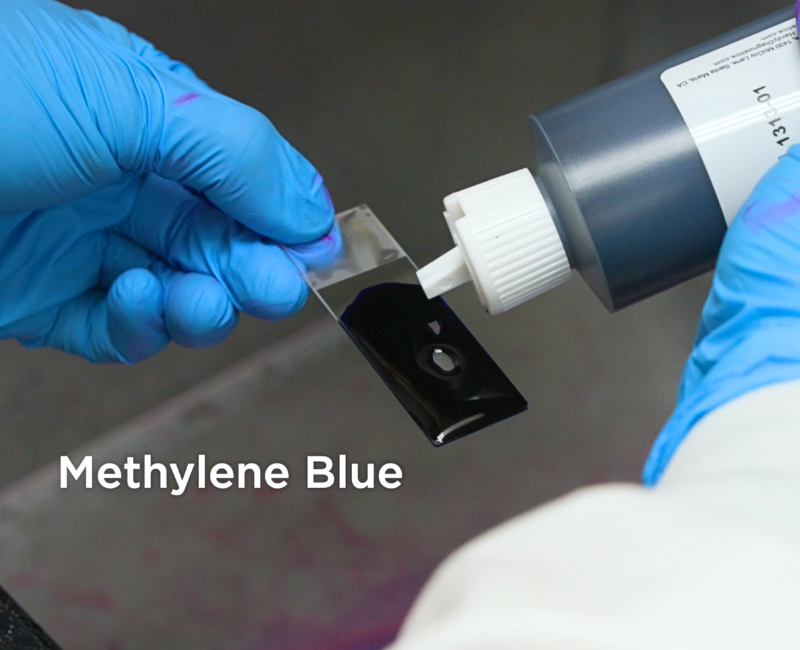
Step 3: Counterstain
(Methylene Blue)
Flood the smear with the methylene blue (or brilliant green, if preferred) counterstain for 2 minutes. Rinse with deionized water again.
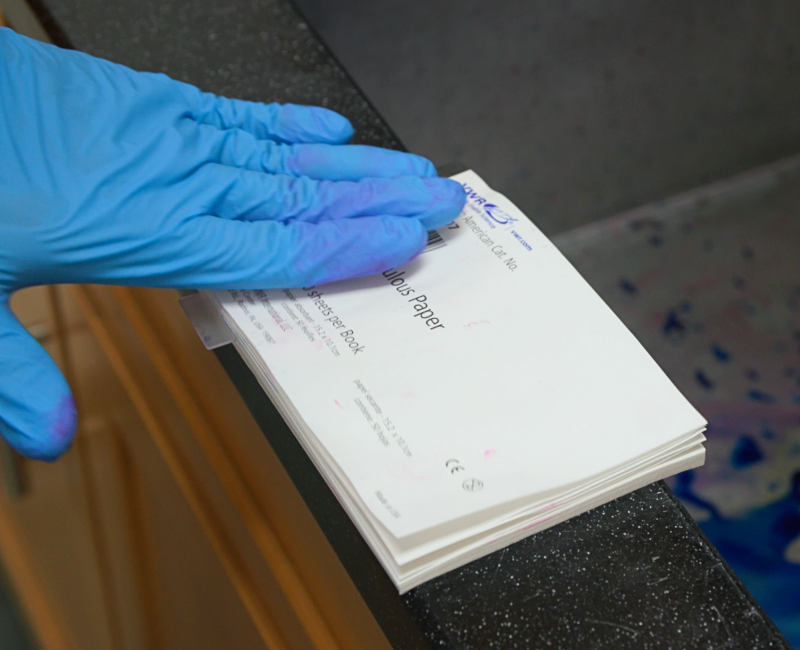
Step 4: Dry the slide
Allow the slide to air dry or blot gently with an absorbent bibulous paper.
Interpretation of Results
Acid-Fast Bacteria (AFB)
The appearance of bright red-stained bacteria that are slender, slightly curved, long or short rods, and sometimes granular or beaded is generally indicative of the presence of AFB. Some atypical forms may appear thick, diphtheroid, sometimes coccoid or very long, or granular with an irregular stain.
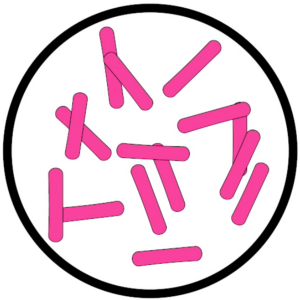

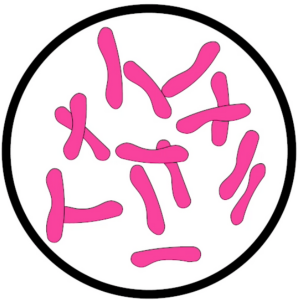
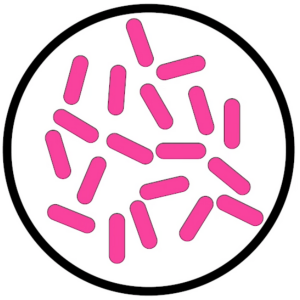


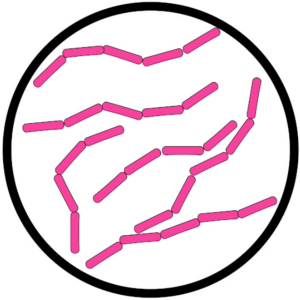
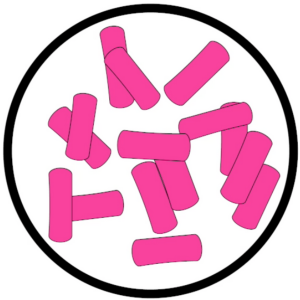


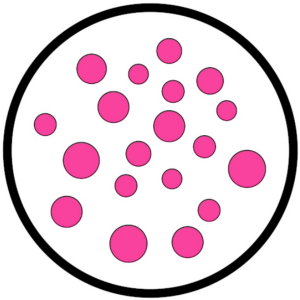

Non Acid-Fast Organisms
Non-acid-fast organisms will stain blue or green, depending upon the counterstain used, as will the background material.
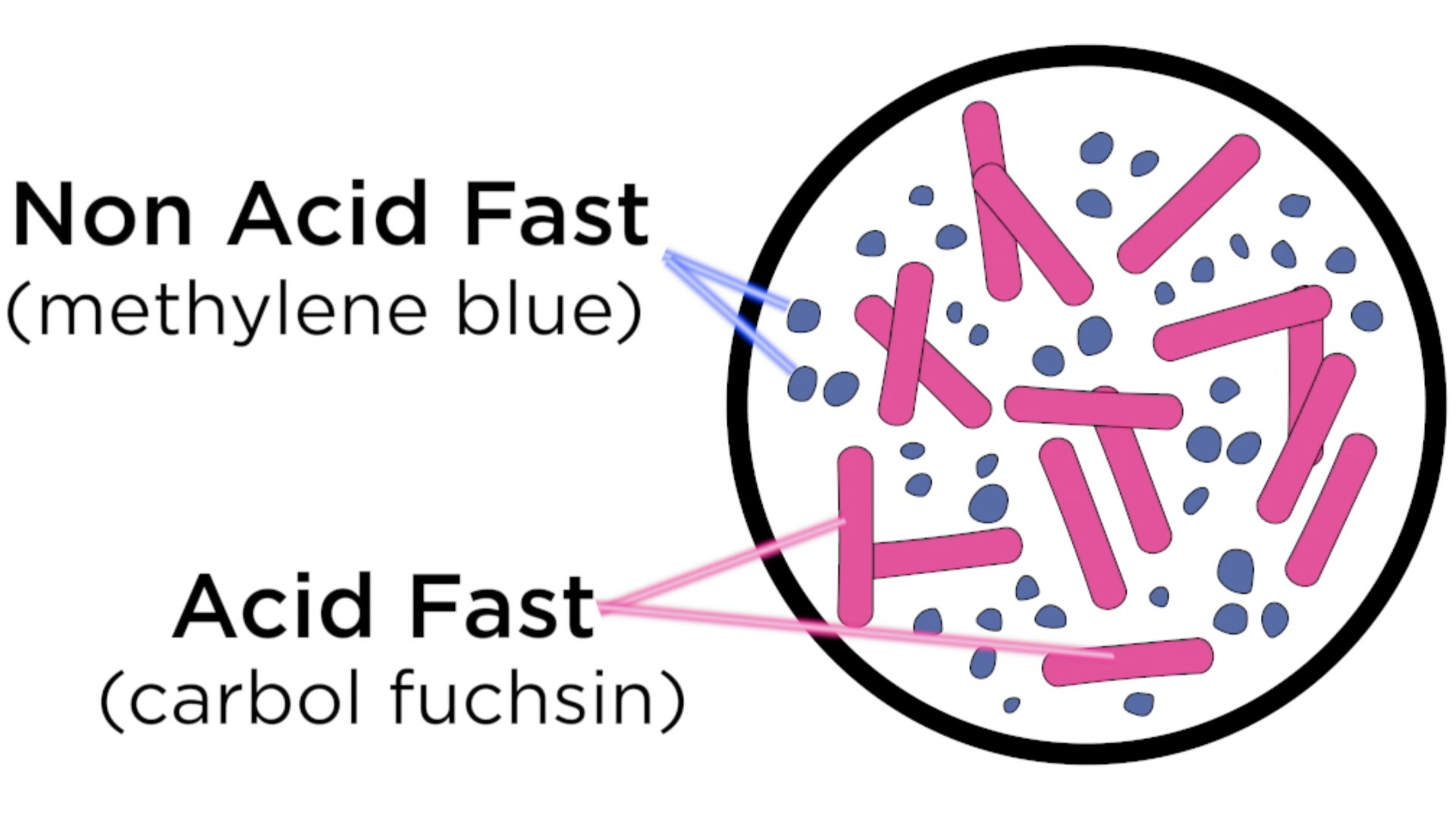
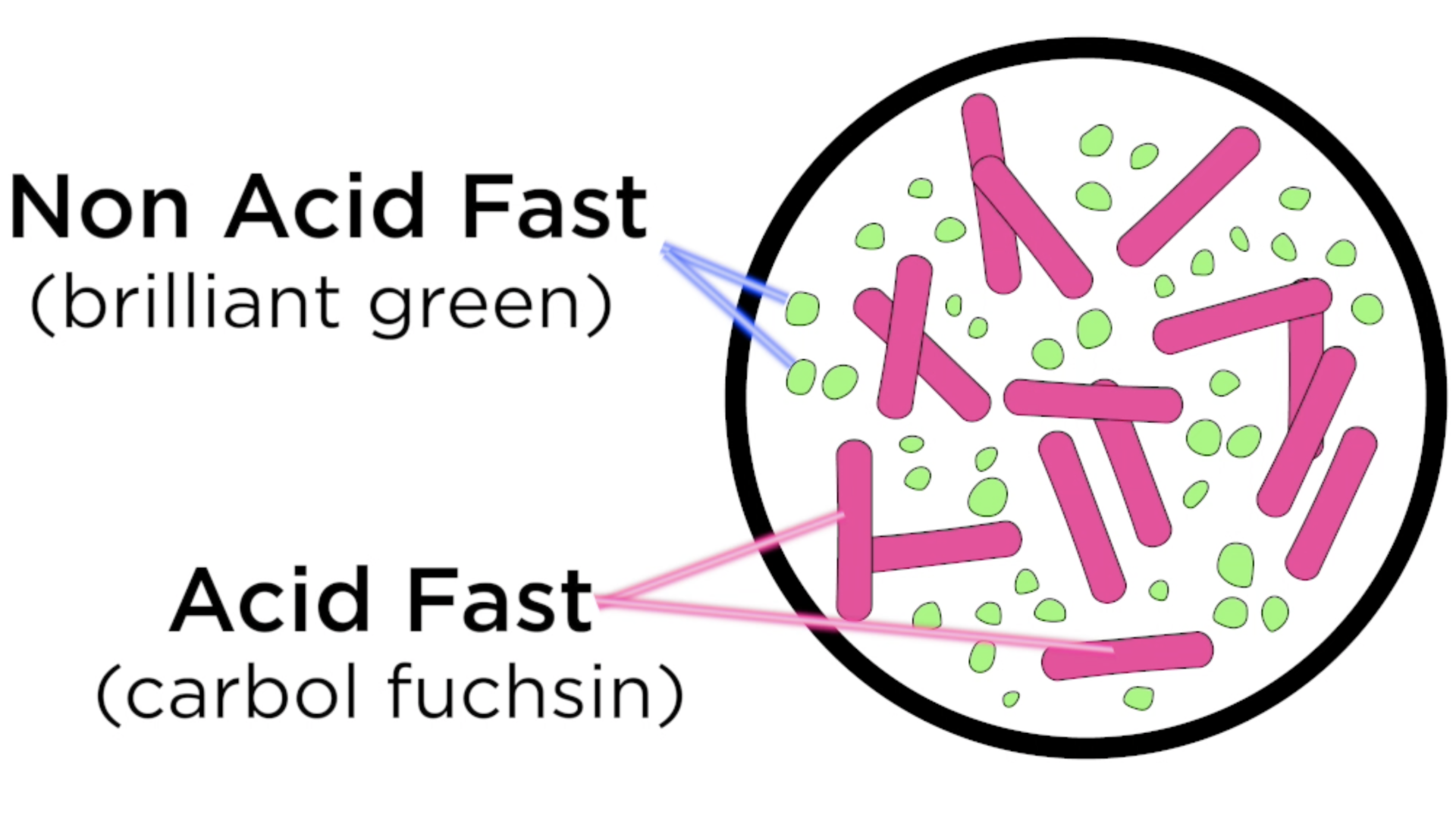
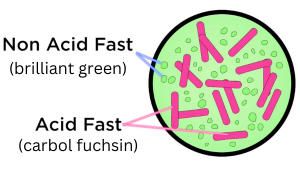
Conclusion
By following the steps outlined in this tutorial and utilizing the Kinyoun-cold method, you can achieve reliable and reproducible results* without the need for heat. Remember to handle all reagents with care, maintain proper laboratory protocols, and consistently practice this technique to enhance your proficiency. With the right tools and meticulous attention to detail, you can confidently perform acid-fast stains and contribute valuable insights to microbiological diagnostics and research.
*Disclaimer: These guidelines are an interpretation of the Acid Fast Stain Kit procedure. They should be used in conjunction with Acid Fast Stain Kit IFU, not as a substitute for it.
Learn with Hardy Diagnostics: Your Partners in Microbiology
By combining visual and written content, Hardy Diagnostics offers a comprehensive learning experience that caters to different learning styles. Subscribe to our YouTube Channel for the latest tutorial videos, and explore more Lab Tutorial Blogs for written step-by-step instructions. Stay ahead in your field with Hardy Diagnostics, your trusted partner in microbiology education.


